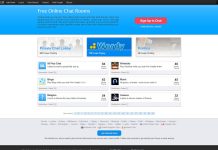
Considering email marketing as obsolete will probably be one of the biggest mistakes you could make when reaching out to your target audience. Such a belief is misguided and will cost you sales opportunities you can’t dismiss.
Today, email remains to be a powerful marketing channel. For starters, email marketing has what it takes to increase your audience share massively. It’s also flexible and scalable. You can adjust your strategies accordingly, based on your most important metrics. Lastly, data ownership remains with you, and that’s something you could tap in any way you want.
If those advantages stated as mere pronouncements don’t appeal to you, perhaps actual numbers would. With email marketing, you could increase ROI by up to 4,300%. That translates to a $42 revenue for each dollar you spend.
Now you’re probably all ears. However, you cannot just wing email marketing. With this channel, it pays to approach it methodically. After all, your main objective is to increase engagement and conversions. It won’t suffice to send out emails that do not elicit your intended response. And with that, you have your work cut out for you.
To help you with that goal, here are actionable ways to get behind.
Ask questions
To maximize the potential of email marketing for your small business, do it right from the get-go. That means tapping your target audience to solicit ideas you could use for your eventual email marketing strategy. For example, you can conduct a customer survey to know what type of email content they would like to see.
Ask pertinent questions regarding how amenable your target audience is to receiving email campaigns. If they’re okay with it, ask what kind of messages they are willing to engage with. Don’t forget their preferred time and days for receiving emails, too.
As for your actual emails, it also won’t hurt if you make it a habit to ask for real-time feedback and suggestions. That will make your readers feel that they’re participating in two-way communication and not just a one-sided sales pitch.
Personalize
You do not want to come off like you’re sending automated or generic emails. You won’t stand out that way. It’s better to craft persoanlized emails, as it increases your open rate by up to 50%. To achieve that goal, you begin with a compelling subject line. Here’s your chance to appeal to your target audience intimately, as if you know the recipient personally.
You can’t go wrong with using your recipient’s given name in the subject line and email body. That will make them feel like you’re sending something exclusive to them instead of a message sent to many. You can also point out a subject of interest to your recipient. In most cases, that would be enough to inspire their curiosity.
Get interactive
Do not limit yourself to emails containing only a block of text. Come up with something dynamic. For example, you can add videos. Doing so increases CTR by up to 300%. Other interactive options include collapsible menus, sliders, and GIFs. You can also incorporate infographics, pop-ups, and clickable links in the email body.
Given how many are opposed to wordy emails, be wary of how you compose them. They can’t be boring. They must be engaging enough without compromising the core of your message. That is the sales pitch you’re trying to make.
Make your readers feel valued
Being considerate scores you points, too, so refrain from sending emails at ungodly hours. Make it easy for your recipients to opt out of your email list as well. That will make them feel like they’re in charge and they’re not being held captive by your brand.
As for the actual message, be mindful of your tone. Talk to your reader as if you’re in conversation with someone you regard with respect. Any brand that places customers in low esteem will suffer from such an oversight.
Lastly, make sure that your email addresses pain points relevant to the reader. Out-of-touch emails fail to inspire engagement.
Clearly discuss what you offer
Your email, in all its friendliness and sincerity and dynamism, has to sell something. And you have to discuss what that is clearly. Consider your customers as bright individuals who won’t be misled. So do not make the mistake of trying to mislead.
Instead, be straight with your intentions. Tell your customers what’s in it for them. And if what you have on offer is enticing enough, they’ll willingly take the bait.
Optimize
People access their emails using different gadgets, from desktops to smartwatches and everything in between. That’s why your emails must be responsive. Consider how they will look on varying screen sizes. They must be readable, whether on a tablet or a smartphone. This is also another way to show your target audience that you care.
Build genuine relationships
Research shows that only 20.81 percent of emails get opened. There’s always the all-too-real possibility that your recipients won’t even bother reading what you have to say. That’s why you must work on building a solid relationship with your subscribers—the kind that would motivate them to click through your email campaigns each time.
You might get tempted to purchase email lists. While that’s an option worth exploring, that’s not the foundation you want for your email campaigns in the long run. Your best approach would be to build authentic relationships with your customers. Have them sufficiently invested in your brand that they’ll voluntarily sign up for your email blasts.
Be Properly Guided
No email marketing strategies and tools will work in your favor without a foolproof plan. And it’s crucial to anchor that plan on SMART (Specific, Measurable, Achievable, Realistic, and Time-bound) goals.
While this content champions email marketing as a possible inclusion to your marketing arsenal, it nonetheless recognizes the challenges encountered by this classic digital marketing tool. That’s especially true for cold emails. That’s where strong subject lines come in.
Consider your subject line as your one shot to attract a reader’s attention. Make sure it’s catchy. The goal is to tickle your recipient’s interest enough for them to click open. Once that’s out of the way, you’ve overcome your biggest hurdle. By then, it’s what you say in the email body and how you say it that will spell the difference between dismissal and engagement.












